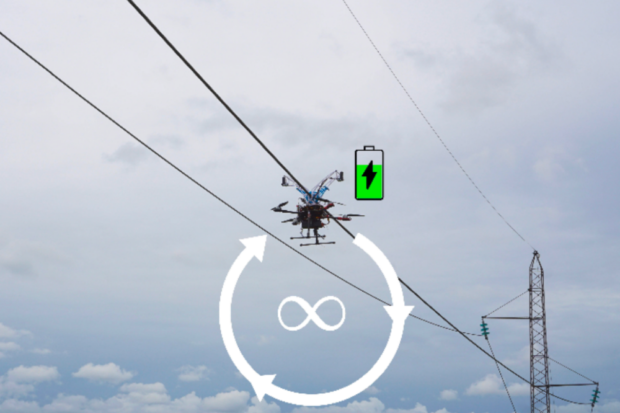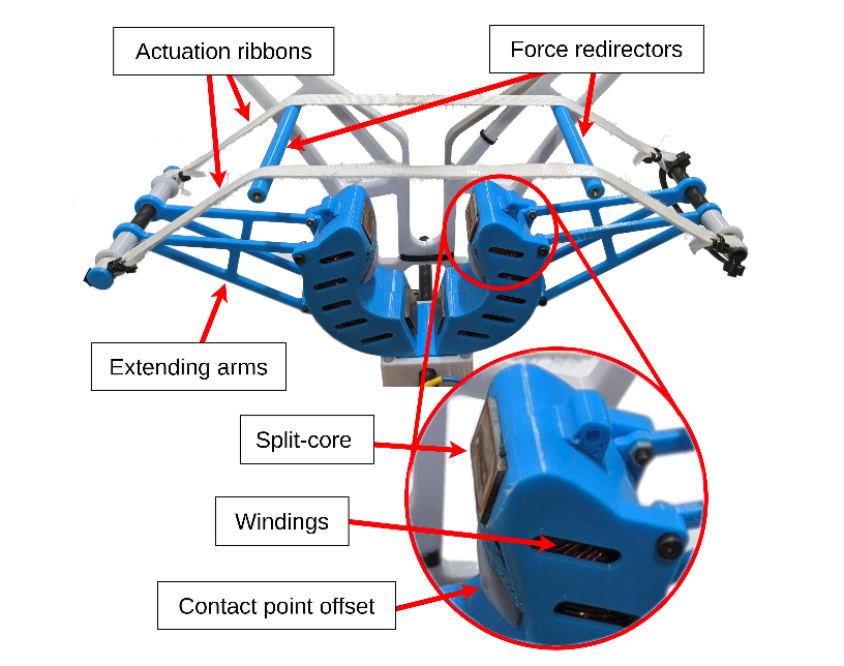Researchers at the Institute of Mechanical and Electrical Engineering Department at the University of Southern Denmark have just published a study demonstrating fully autonomous self-recharging drone system capable of long-duration sustained operations near powerlines.
The drone is equipped with a robust onboard perception and navigation system that enables it to locate powerlines and approach them for landing. A passively actuated gripping mechanism grasps the powerline cable during landing after which a control circuit regulates the magnetic field inside a split-core current transformer to provide sufficient holding force as well as battery recharging.
The system is evaluated in an active outdoor three-phase powerline environment. They demonstrated multiple contiguous hours of fully autonomous uninterrupted drone operations composed of several cycles of flying, landing, recharging, and takeoff, validating the capability of extended, essentially unlimited, operational endurance.
A combined gripper and charger design was presented, upgrading the technology from previous work. A mission autonomy system was presented, integrating previous modules for drone powerline operations. This was validated through multiple cycles of flying and recharging over a span of multiple contiguous hours.
The drone system is equipped with an onboard perception and autonomy component which detects overhead power lines and navigates the drone towards them. The gripper on top of the drone allows it to grasp a power line and recharge its batteries.
While recharging, the drone emits a characteristic sound from its gripper and energy harvester. This test, which was carried out over the span of two and a half hours shows the system continuously cycle between its flying and recharging modes.
The drone remained fully autonomous for the duration of the test and also demonstrated a recovery from an aborted landing. The current in the power line was approximately 300 amperes from which the energy harvesting device was able to charge the battery with 50 watts. A higher power line current would result in a proportionally higher charging power.
The integrated system was demonstrated to operate for more than two hours with five inspection/charging cycles, proving its feasibility.
Future work includes improving the system robustness and testing in more remote locations, expanding the complexity of the mission by adding inspection features, and investigating the system’s robustness to adverse weather conditions.
The full 8-page document can be accessed here.
Source: University of Southern Denmark
See also:
June 2022
Drones Re-Charge on Power Lines in Denmark
December 2020:
Grippers Enable Micro Aerial Vehicles to ‘Perch’
October 2016
Tech Inspired By Nikola Tesla Charges Drones In Mid-Air
June 2014
MIT Researchers’ UAS Recharges Batteries by Perching on Power Lines



